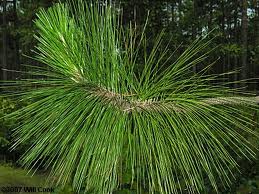Persea
POTTING
Outdoors: The soil requirements don't have to be precise, though they must have excellent drainage. The trees will not survive in waterlogged soil. They will succumb to as little as two days of flooding. In exposed areas, Avocados need to be sheltered from sweeping winds by some kind of windbreak. The best time to plant Avocado trees outside is spring. The distance between the trees depends on the variety of the Avocado and the type of soil. Wider spacing should be allowed on richer soils. A distance of 25-35 feet between trees is about right. The flowers of the Avocados contain both male and female parts, but they aren't usually self-pollinating because the stigma (female part) matures and ceases to be receptive before the stamens (male part) produce the pollen to fertilize them. Furthermore, since that condition is the same for all the trees of that certain variety at the one time, it is beneficial to interplant varieties that can pollinate each other. Consult some Agricultural Department of your state regarding that matter. Trees that are newly planted should receive enough water and shade from strong sunshine. Avocados need a lot of fertilization with animal manures or fertilizers. It is a good habit to keep the soil around the trees covered with organic mulch. Care must be taken not to overfeed with nitrogenous fertilizer as this will cause lush vegetative growth at the expense of the production of fruit. Most trees tend to bear heavier crops every two years. When the fruits are picked, the stems should always be left attached to them.
Houseplants: Avocados grown inside thrive in sun or in a good, lighted location. When they've filled their pots up with healthy roots, they should be potted in larger ones. Repotting should be done in the spring. Well-rooted plants should be given a dilute liquid fertilizer every week or two. Watering should be done so that the soil never becomes really dry but isn't ever soggy and waterlogged. After a while, Avocados that are grown in a pot usually develop a condition that causes the leaves to be blotchy and spotted. It isn't worthwhile to try to nurse them back to health when they can easily be raised from seeds.
Propagation
Outdoors: Avocados are often increased by seeds, but it is better to bud or graft scions from a tree having qualities that are desired on to seedling understocks. Budding or grafting is usually performed in midwinter, December and January preferably.Houseplants: Avocados grown as houseplants are interesting and attractive. They are easily raised from seeds. Remove the large seed from the center of an Avocado fruit and plant it vertically with its pointed end up, or horizontally, in a well-drained 4- or 5-inch pot of porous, fertile soil. The top of the seed may just barely peek above the surface of the soil. If the soil is kept fairly moist and the temperature is between 60 and 70 degrees, the seed will begin to sprout and a pretty, leafy plant will develop. Avocado seeds may also be started in water, but unless they're moved into soil within a few weeks or months after germination, they'll deteriorate. Stand the seed pointed end up in a jar containing water and a few pieces of charcoal. The water should just touch the bottom of the seed. If the neck of the jar is too big for the seed, stick three strong toothpicks or similar slivers of wood into the side of the seed and rest these on the rim of the jar.
 |
P. palustris |




